Last year, the California Ocean Protection Council estimated that by 2050, water levels along the West Coast will likely increase by one foot. The only way to guard against this rapid rise is to significantly decrease carbon emissions—and since there’s no guarantee that rising sea levels can be effectively reversed, even with the most thoughtful environmental practices, the resilience and adaptability of architecture is now a crucial aspect of practicing design in high-risk, coastal areas.
In some cases, that means building in the water. Take the Float Lab: a white fiberglass structure that’s designed to float in coastal waters to help mitigate some of the issues caused by sea-level rise. The project’s first prototype, which was designed by the California College of the Arts’s Architectural Ecologies Lab, debuted in the waters off of San Francisco in August—and recently received an American Institute of Architects’ 2019 Innovation Award.
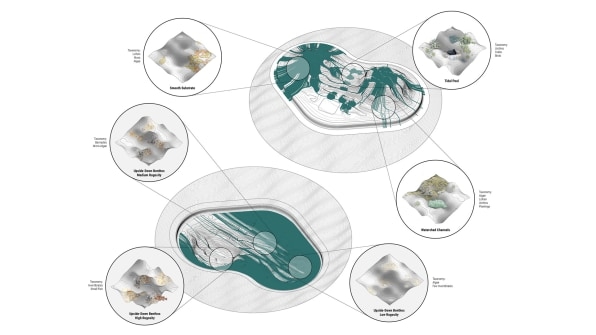
[Image: CCA Architectural Ecologies Lab/courtesy AIA]
It may look more like seafoam than a built structure, but it’s a strong example of how architecture can play a role in increasing biodiversity, contribute to scientific research, and even help lessen the impact of climate disasters.
The breakwater structure, which exists on 0.002 acres, is fabricated from a fiber-reinforced polymer composite substrate. Its wavy design allows for all sorts of marine life to create habitats in the many nooks and crannies on its underside—which the team calls “fish apartments.” The topography on the top of the structure creates tiny tidal pools supplied with seawater through an irrigation channel, another opportunity for sea life to thrive.
In short, it’s an artificial habitat for marine ecology. But perhaps even more intriguingly, the architects behind the project think that these Float Labs could even help mitigate the larger issues created by sea-level rise.
“In large masses, this biological growth can help attenuate wave action and reduce coastal erosion, one of the primary impacts of climate change and sea level rise,” they write. “The vessel includes attachment fittings on the underside to suspend future prototypes and further develop the wave attenuation potential of the optimized substrate.”
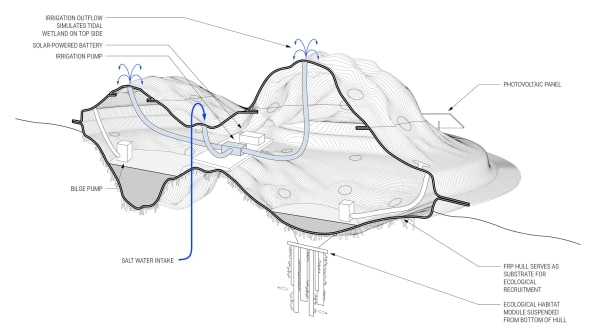
[Image: CCA Architectural Ecologies Lab/courtesy AIA]
“The project began as an academic experiment seeking to expand architecture’s capacity to engage extra-disciplinary expertise and address one of the most pressing ecological challenges of our time,” the architecture team said in a statement. “It has resulted in a robust multi-disciplinary partnership in which the outcomes would not be possible without the contributions of each partner.”
Those partners include experts in marine ecology, like CalTech’s Benthic Lab and Moss Landing Marine Laboratories, as well as naval architecture, including Tri-Coastal Marine, not to mention the Port of Oakland, where the prototype is currently deployed near the Middle Harbor Shoreline Park. While early design ideas for this project were drawn by hand, the multidisciplinary architecture and science team created the bulk of the Float Lab through parametric modeling.
The project offers a vision of architecture that increases the resilience of coastal areas not just for people, but for the natural world. It’s a “study in adaptation—in how we think, how we design, how we build, and who we build for,” the team writes in a statement in response to the AIA award the project received this month. “The lessons of the Float Lab are many, not least of which is the value of interdisciplinary collaboration in pursuit of new ways of working—for all involved—and, consequently, new habitats for a variety of lifeforms, including humans.”
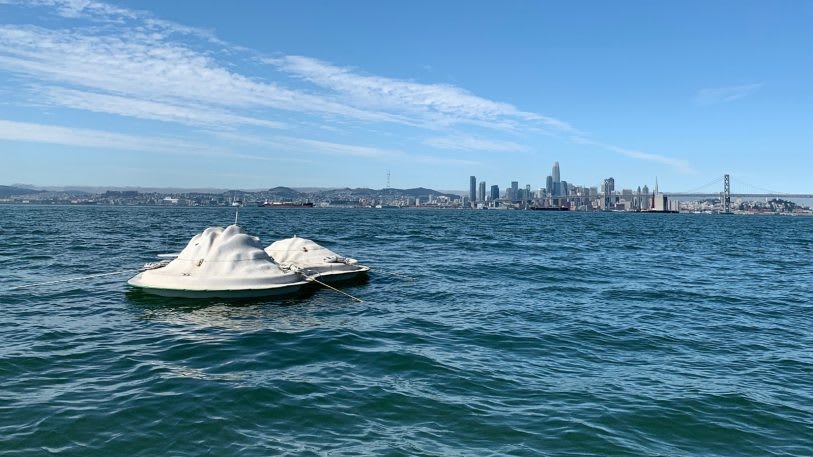
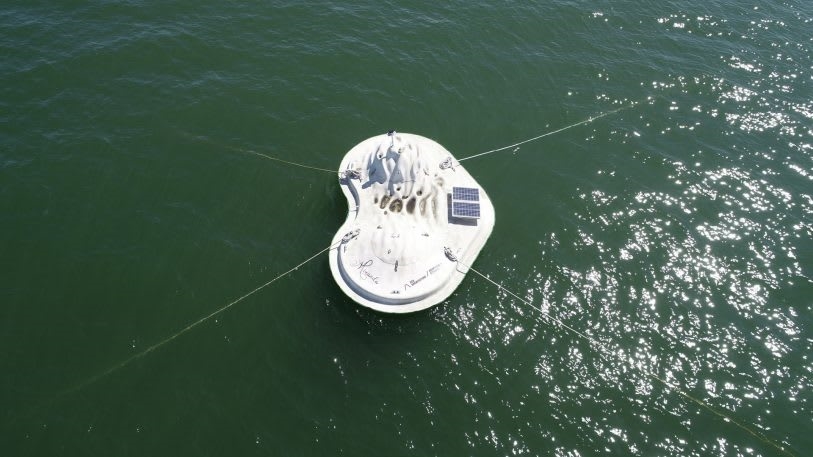
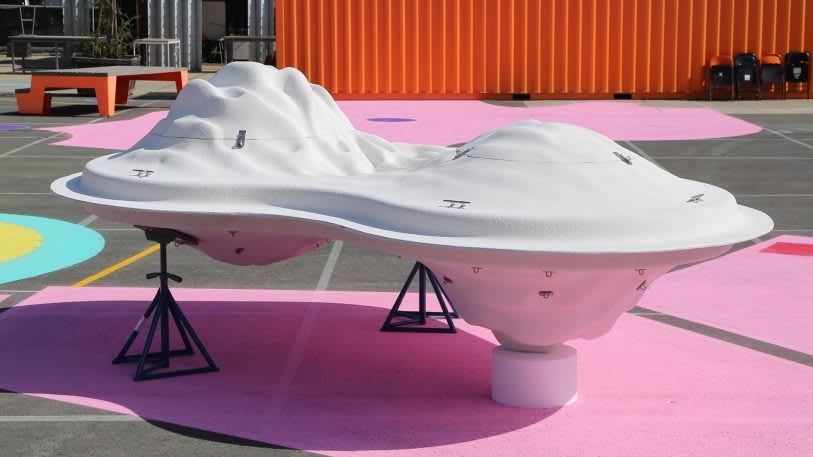
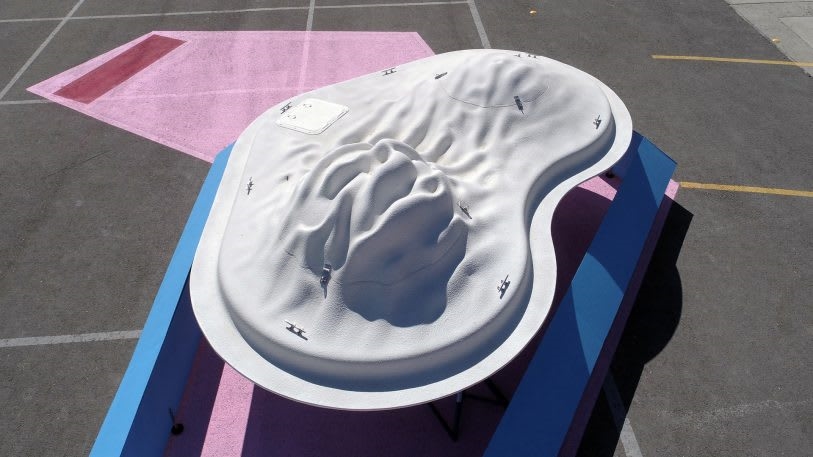
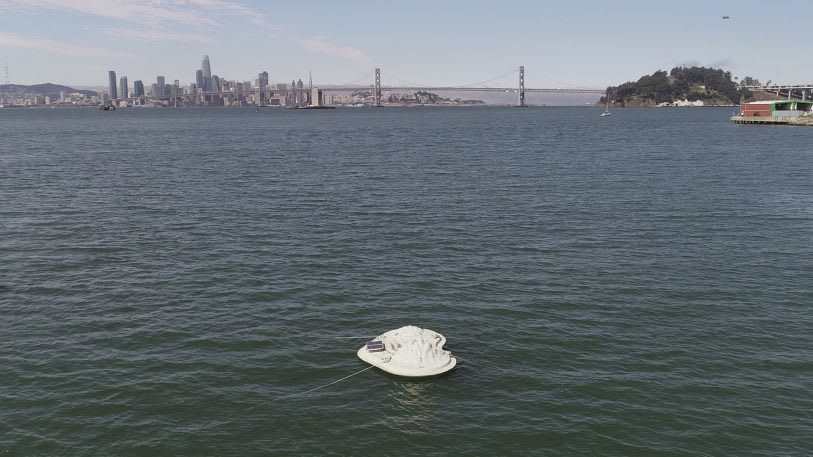
(47)